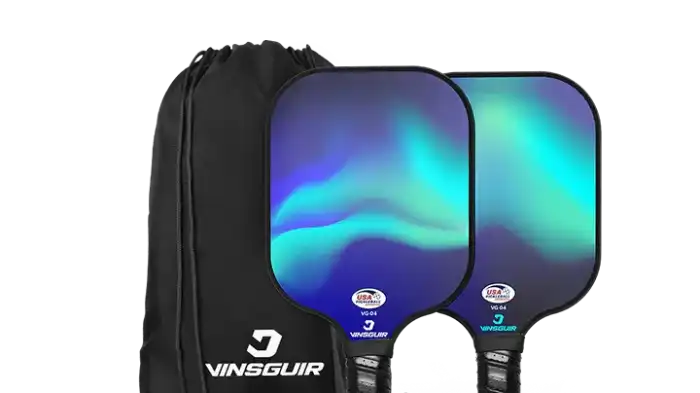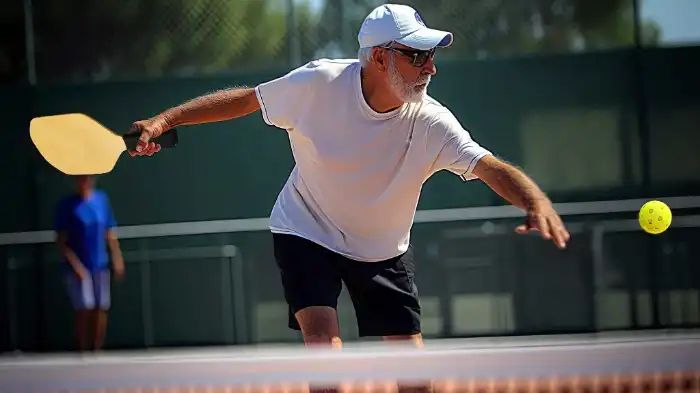Pickleball, the engaging and rapidly growing sport, offers players a choice between two primary types of paddles: wooden and fiberglass. Each material has its own set of advantages and disadvantages, catering to various playing styles and preferences.
When choosing a pickleball paddle from these two(wooden and fiberglass pickleball paddles), a question may arise in your mind, “Are Wood or Fiberglass Pickleball Paddles Better?”. In this blog, we are going to answer this question by explaining the pros and cons of wooden and fiberglass pickleball paddles which will help you to decide which one is suitable for your pickleball game.
Pros & Cons of Wooden Pickleball Paddles
Wooden paddles were the original choice for pickleball enthusiasts and are still used by many players today. Here are some key points to consider:
Pros of Wooden Pickleball Paddles
- Natural Feel: Wooden paddles offer a unique, natural feel that many players appreciate. The solid wood construction gives a certain level of “feedback” when striking the ball and can provide a satisfying sensation.
- Quietness: Wooden paddles tend to be quieter compared to their fiberglass counterparts. If you play in a noise-sensitive area or prefer a more subdued game, a wooden paddle may be an ideal choice.

Cons of Wooden Pickleball Paddles
- Weight: Wooden paddles are typically heavier than fiberglass paddles. This added weight can cause more fatigue during prolonged gameplay, especially for players with weaker wrists or arthritis.
- Lack of Power: Wooden paddles may lack the power and pop that can be achieved with a fiberglass paddle. The softer hitting surface of wood can result in a lower ball speed, making it harder to execute powerful shots like smashes or drives.
Advantages and Disadvantages of Fiberglass Pickleball Paddles
Fiberglass paddles have become increasingly popular in recent years, with many players gravitating towards their unique characteristics. Let’s explore why:
Advantages of Fiberglass Paddles
- Lighter Weight: Fiberglass paddles are generally lighter compared to wooden paddles. This lighter weight can provide players with better maneuverability, quicker response times, and less strain on the arm and wrist during extended play.
- Increased Power: Fiberglass paddles often have a larger sweet spot and provide more power due to their advanced construction. The composite materials used in these paddles help to generate more force when striking the ball, making it easier to achieve powerful shots.
Disadvantages of Fiberglass Pickleball Paddles
- Vibrations: Some fiberglass paddles may transmit more vibrations upon ball impact compared to wooden paddles. This may not be an issue for most players, but those with sensitive wrists or joint conditions should consider the potential impact of vibrations on their playability.
- Higher Cost: Fiberglass paddles are generally priced higher than wooden paddles due to the advanced materials and manufacturing processes involved. This may be a drawback for budget-conscious players who are just starting with pickleball.

Frequently Asked Questions
The main difference between a wood and a fiberglass pickleball paddle lies in the material used for construction. Wood paddles are made from plywood layers, while fiberglass paddles are composed of layers of fiberglass sheets. This difference impacts the overall weight, durability, and playing characteristics of the paddle.
The choice between wood and fiberglass pickleball paddles depends on personal preference and playing style. Wood paddles offer a natural feel and quiet play, but they can be heavier and lack power. Fiberglass paddles, on the other hand, are lighter, provide more power, and often have a larger sweet spot, but they can be more expensive and may transmit vibrations.
Generally, fiberglass paddles tend to be more durable than wood paddles. Fiberglass is a stronger material that can withstand impacts and high-intensity games. Wood paddles, while durable in their own right, are more susceptible to chips, cracks, and wear over time.
Beginners often find fiberglass pickleball paddles more forgiving due to their larger sweet spot and increased power. However, some prefer the feel of wooden pickleball paddles.
Conclusion
In conclusion, when it comes to the eternal question, “Are wood or fiberglass pickleball paddles better?” there is no one-size-fits-all answer. The choice between wooden and fiberglass paddles ultimately boils down to personal preference and playing style.
Wooden paddles offer a natural feel and a quieter game, but they come with the trade-off of being heavier and offering less power. On the other hand, fiberglass paddles are lighter, provide more power, and often have a larger sweet spot, but they can be pricier and may transmit vibrations.
Your decision should hinge on your priorities and needs as a pickleball player. Take into account your playing style, any physical limitations, and your budget when making this significant choice. The right selection can indeed elevate your enjoyment of this dynamic and exciting sport.

